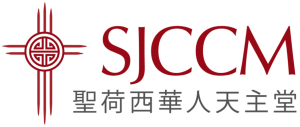Concomitance and Return of the Precious Blood
經Dcn Ray Gans -The Holy Family Catholic, SJ 許可由Dcn Simon翻譯如下:
“伴隨/並存”(Concomitance)是天主教的教義中宣稱耶穌完全存在於每一個聖體聖事中的元素 (element)-即聖體和聖血。這意味著當我們領受聖體或喝杯爵中的聖血時,我們體驗到的是全部整體的耶穌基督。
這教義的理論根據在於耶穌基督是看不見的天主,他的肉體不能與血或靈魂分離。當我們參與聖體聖事時,我們食用了基督的榮耀身體──他的身體、血、靈魂和神性,是我們的天主和救主的實質。
耶穌在若望福音中告訴我們:「凡吃我的肉、喝我的血的,就得永生;在末日我要叫他復活。」在最後的晚餐中,我們在瑪竇福音中讀到:「他們正吃的時候,耶穌拿起餅來,祝福了,擘開,遞給門徒,說:『你們大家拿去吃,這就是我的身體。』」然後,他拿起杯來,感謝後遞給他們,說:「你們大家拿去喝,這是我的血,新而永久的盟約之血, 將為眾人傾流,以赦免罪惡。」
耶穌要我們兩樣都要領受。當我們在彌撒中領受感恩祭的兩種元素時,我們以與門徒在最後的晚餐中所做的相同方式分享耶穌的體和血。換句話說,透過領受聖體聖血,我們更完全地參與了感恩祭的奧秘。麵餅和杯爵中的酒都是可以觸摸得到的東西,是基督真實臨在的標誌。雖然一同領受兩種元素-耶穌的體和血,並不是絕對必需的或必要的,但卻是最完美的方式。
教會長久以來接受了聖體聖血「同在並存」的教義,可能從一開始就有。然而,在最初的一千年左右,這並不是個大問題,因為所有的基督徒都在彌撒中領受了耶穌的聖體和聖血的兩種形式。然而,隨著時間的推移,普通信徒領受聖體時從飲用聖血的做法開始減少(因擔心聖血灑出和其他問題),到了15世紀,耶穌的聖血被限制為僅限於神職人員領受。教會的法規在60年前才經過修訂,允許地方主教讓信徒在他們所屬的教區領受基督的寶血。
我們完全理解許多人可能對大家共飲同一杯爵的聖血有健康上的憂慮,而有些人的確比其他人有更大的風險,更容易受到感染(無論病源為何)。這裡想要特別說明的是,領受聖血完全是個人的選擇,千萬不要有非得去領聖血的感覺,但只要我們做好合理的預防措施(如清潔雙手,在領聖血之間擦拭乾淨杯爵的邊緣等),在這個時候領受基督聖血,應該是相當安全的。因此,為了讓教友們更充分地參與領受這聖體聖事,我們的主教Cantu已放寬之前對於領受聖血的的限制,鼓勵教友們在彌撒中同時領聖體聖血。(Bishop Cantu’s letter )
即便如此,就像戴口罩一樣,你和你的家人的健康是你的選擇和責任。如果你對於領受聖血仍然感到不安全,那是可以理解的,但請你在領受聖體之後,以鞠躬的方式表達對基督聖血的尊敬。無論我們是否選擇領受它,基督聖血仍然是世上最珍貴的飲料。
Dcn Ray Gans from The Holy Family Catholic church in San Jose wrote this article appeared in the 7/9/2023 Bulletin.
Concomitance is the Catholic doctrine that says Jesus is fully present under each Eucharistic species, i.e., the host and the precious blood. This means that when we consume either the host or sip from the cup, we experience all of Jesus.
The justification behind this doctrine is that Jesus Christ is God is invisible; his flesh cannot be separated from his blood or his soul. When we partake in the Eucharist, we consume christ’s glorified body – his body, blood soul, and divinity, the substance of all of our Lord and Savior.
Jesus tells us in John’s Gospel “whoever eats my flesh and drinks my blood has eternal life and I will raise him on the last day.” At the last supper we read in Matthew’s gospel “ While they were eating, Jesus took bread, said the blessing, broke it and giving to his disciples said “ Take and eat; this is my body.” Then he took a cup, gave thanks, and gave it to them saying “drink from it , all of you, fir this is my blood of the covenant, which will be shed on behalf of many for the forgiveness of sins. “
Jesus asked us to do both. When we consume both species of the Eucharist at Mass, we enter into this same act of eating and drinking Jesus body and blood as the disciples did at the Last Supper. In other words, by receiving host and cup we participate more fully in the divine mystery of the Eucharist. Both hosts and cup are touchable materials, signs of the real presence of Christ, and while it is not required or essential to receive Jesus under both species, it is the most perfect form of doing so.
The church has accepted the doctrine of concomitance for a long time probably from the beginning. But for the first thousand years or so it wasn’t much of an issue because all Christians received the body and blood of Jesus in both forms at Mass. Over time, however the practice of receiving Holy Communion on the cup by the faithful begin to drop off (due to fears of spillage and other issues ) and by the 15th century the Precious Blood was restricted to the clergy. Church’s laws were revised only 60 years ago to let Bishops return the cup of Christ’s blood to the Faithful in their dioceses.
It is understood that many people may have health concerns about sharing from a common cup, and some people are more at risk (for any source) than others. To be very clear, receiving from the cup is completely optional and no one should feel pressured into doing so, however as long as sensible precautions are in place (sanitizing hands, wiping the rim of the cup between recipients, etc. ), then receiving the Precious Blood should be reasonably safe at this time. And so, to allow the faithful to participate more fully in the reception of this sacrament, our bishop has relaxed his prior restriction on receiving from the cup.
Even so, as with masks, your personal health and that of your family is your choice and responsibility. If you feel uncomfortable sipping from this cup, that is OK, but please reverence Christ’s Precious Blood with a bow as you pass by when receiving Holy Communion, whether we choose to receive it or not, it is still the most precious drink on earth.
